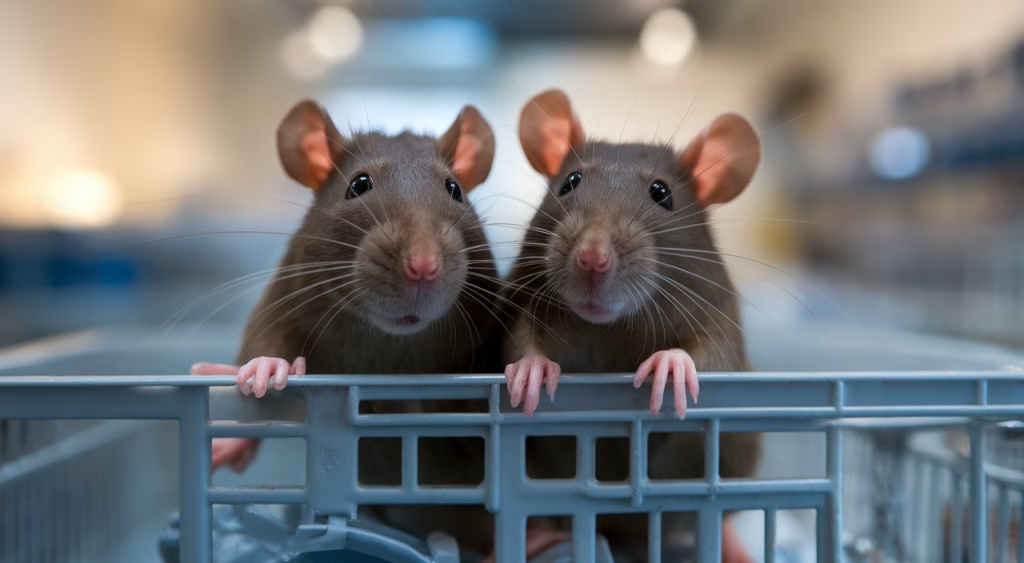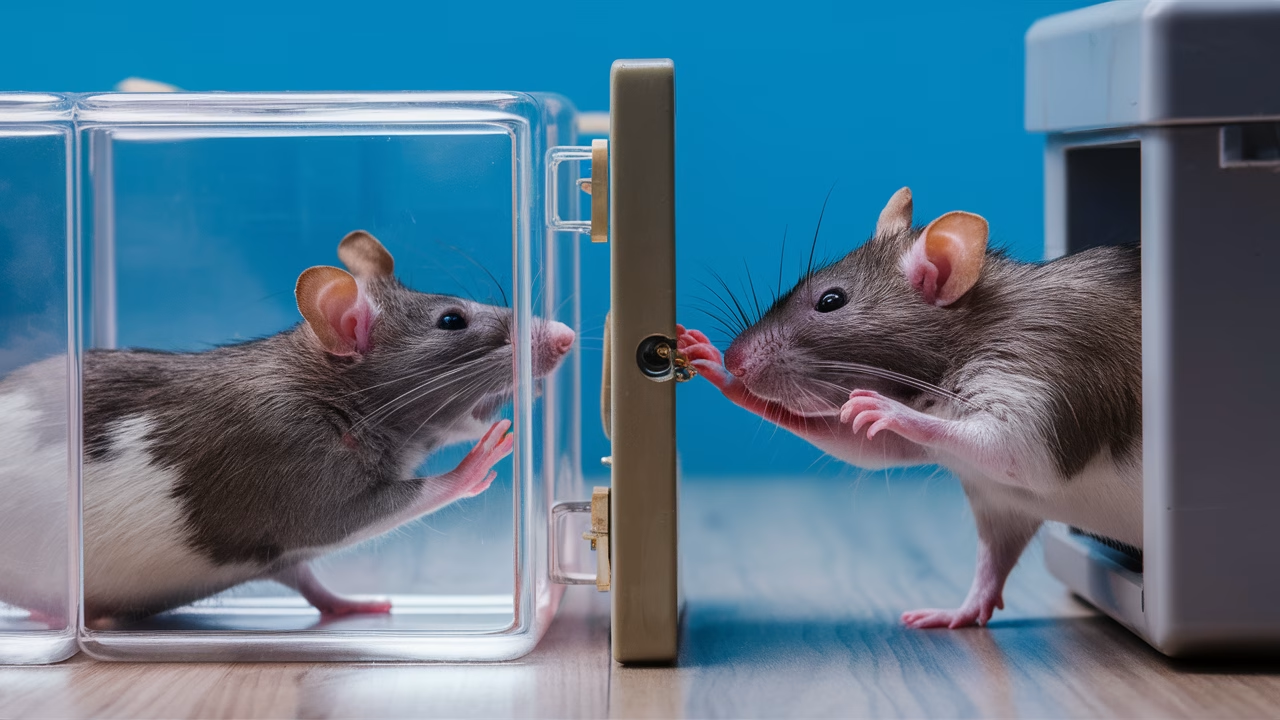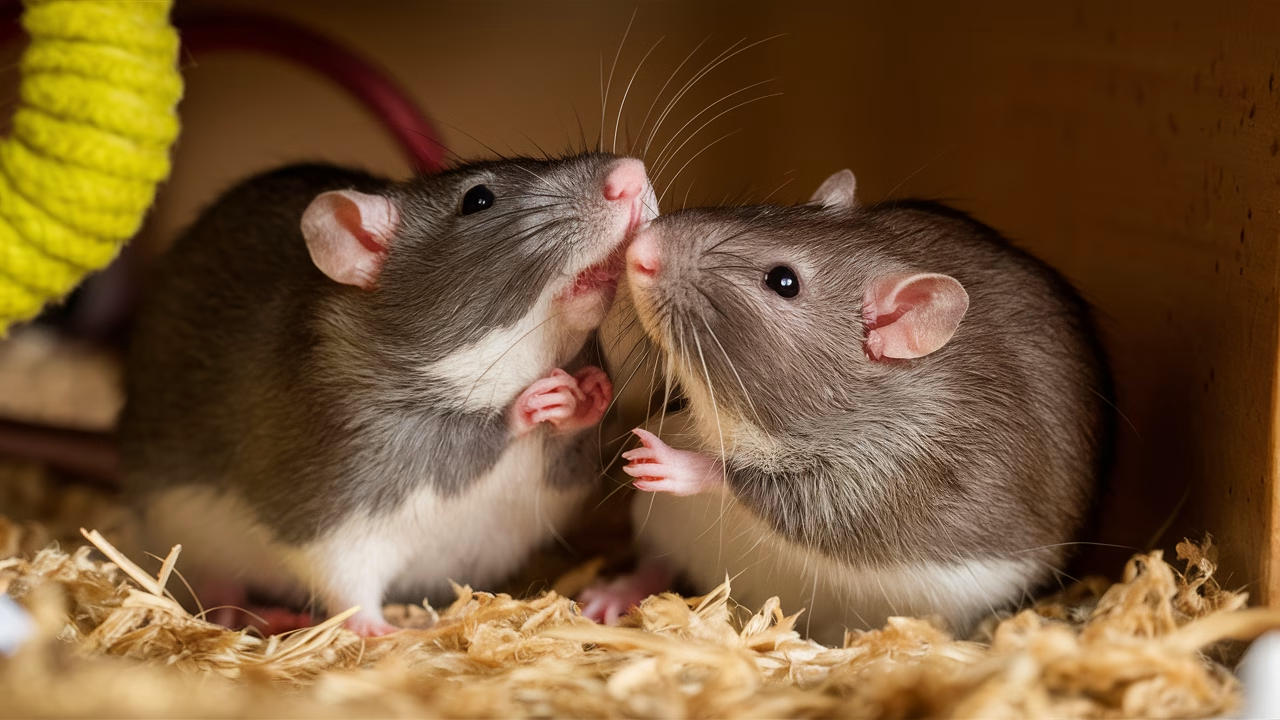Can rats show empathy towards each other?
Yes, groundbreaking studies have demonstrated that rats can display genuine empathy-like behavior by consistently freeing trapped companions, even without personal gain. This empathy toward each other appears driven by emotional engagement and deep social bonds rather than self-interest, revolutionizing our understanding of how rats demonstrate social behavior.
TL;DR: Are Rats Capable of Empathy?
- Key Finding: Rats will consistently work to free a trapped companion from a container — even when no tangible reward is offered.
- Why It Matters: This challenges the long-held belief that empathy is exclusive to humans and some primates.
- Behavioral Insights: Rats exhibit social behavior consistent with compassion or emotional contagion.
- Real-World Impacts: Pet owners and researchers can better understand and enrich the lives of rats based on these empathy in rats study findings and implications.
Introduction: The Concept of Empathy in Animals
Empathy — the ability to share and understand the feelings of another — has long been considered a uniquely human or perhaps primate trait. But what if tiny, whisker-twitching rodents could feel it too? Recent research suggests just that. Rats, those often-misunderstood creatures of the lab and pet tanks, are revealing behaviors startlingly reminiscent of empathy.
The question, “Can rats show empathy towards each other?” may seem odd to people unfamiliar with rodent social behavior. But for ethologists, neuroscientists, and animal lovers, it opens a new doorway into understanding how rats demonstrate social behavior — and possibly even an evolutionary glimpse into the origins of our own capacity for compassion.
Study Findings: Rats Willing to Aid Trapped Companions
One of the pioneering studies that altered our perception of rat empathy featured a transparent “restrainer” — a small container that could trap a rat. Researchers placed a free rat in an arena with its cage mate locked in the container. The only way out? A door that required purposeful effort to open.
What followed was striking: the free rat consistently worked to release its trapped companion, even when no rewards (like food) were present. These empathy in rats study findings revealed that rats ignored chocolate chips—their favorite treat—in favor of helping a fellow rat when placed in a helping vs. hedonic choice.
This behavior wasn’t random. The free rats:
- Reluctantly left the scene until their trapped companions were freed
- Displayed stress behaviors when separated from the trapped rat
- Learned the door mechanism faster over repeated exposures — indicating strong motivation
Importantly, rats did not open empty containers or those containing fake rats (rat-shaped toys), suggesting their behavior was socially motivated and not mere curiosity or habitual action. This demonstrates how rats show empathy towards each other through purposeful, compassionate actions.
Implications for Animal Behavior Research
The implications of these findings reverberate through the field of animal behavior research and beyond. Empathy in rats likely taps into a rudimentary form of social cognition — the ability to recognize and respond to the emotional states of trapped companions.
Let’s unpack what this means:
| Traditional View | New Understanding |
|---|---|
| Empathy is a cognitive skill unique to humans and great apes | Empathy-like behavior may be rooted in brain structures shared across mammals |
| Rodents are emotionally basic and self-serving | Rats demonstrate prosocial behavior with no immediate reward |
| Helping behavior requires social learning or language | Rats respond spontaneously to distress, implying innate mechanisms |
Emotionally speaking, what drives rats to help? The answer likely lies in affective empathy—where an animal feels and mirrors another’s distress. It’s not complex perspective-taking like human empathy, but a kind of “emotional resonance” that shows how rats demonstrate social behavior naturally.
This poses exciting evolutionary questions: Did this emotional mapping evolve independently, or is it a conserved trait passed down from early mammals?
Practical Applications for Pet Owners
If you keep rats as pets—or are considering it—this research on empathy in rats changes how you might approach their care. Understanding that rats can demonstrate empathy and persistent social tendencies means we have a duty to treat them not as simple pests or lab tools, but as socially complex beings deserving of respect and stimulation.
Here’s what these empathy in rats study findings and implications mean in practical terms:
- House Rats in Pairs or Groups: Isolating a rat can lead to stress and reduced well-being. Given their empathic nature, rats thrive better socially with trapped companions they can comfort.
- Watch for Companionship Bonds: Like humans, rats have preferences — bonded companions may comfort each other and even gently groom one another.
- Recognize Emotional Distress: A withdrawn or anxious rat might be responding to the loss or stress of its cage mate. Behavioral changes can reveal emotional ripples in a group.
- Enrichment Should Mimic Social Interactions: Puzzle feeders or play structures encourage collaborative problem-solving and mitigate boredom through natural social behavior.
Once we start viewing rats through the lens of empathy and social intelligence, our approach as caretakers inevitably evolves to support their emotional needs.
Conclusion: Understanding Social Behavior in Rats
Science is constantly reshaping the boundary between humans and the animal kingdom. Discovering empathetic tendencies in rats challenges rigid hierarchies of intelligence and emotional depth. While human empathy includes complex thought processes and moral reasoning, rat empathy — subtle, persistent, and emotional — is no less profound in how rats demonstrate social behavior.
If you’re a student of animal behavior research, these findings fuel exciting lines of inquiry about empathy in rats. If you’re a pet owner, they underscore the real need for compassion in how we structure a rat’s environment. And if you simply love animals, they serve as yet another reminder that even the smallest creatures can carry the spark of something deeply familiar — the pull to care for trapped companions and other beings in need.
- Do rats really understand that another rat is distressed?
Studies suggest rats can emotionally match the distress of their trapped peers—but whether they cognitively understand the situation remains debated in animal behavior research. - Could helping behavior be selfish in nature?
Experiments offering food in exchange for helping show that rats help even when food is present or when the act costs them. This strengthens the empathy in rats study findings over self-reward motivations. - What if the trapped rat is unfamiliar?
Rats are more likely to help cage mates or familiar individuals, hinting that social familiarity amplifies empathic behavior, though they may learn to help strangers over time. - Is this behavior unique to rats?
No. Similar helping behaviors have been documented in elephants, dogs, some birds, and primates. But rats are among the few small mammals studied so rigorously for empathy. - Can pet rats suffer from emotional stress if alone?
Absolutely. Isolated rats often show signs of anxiety and depression. Companionship is both a mental necessity and biological comfort that demonstrates how rats show empathy towards each other. - Should I get a second rat?
If your rat lives alone, consider introducing a friend — carefully and gradually. Their social nature makes companionship integral to their well-being and natural empathic behaviors. - What does this mean for science education?
Understanding empathy in rats offers new teaching tools on ethics, neuroscience, and evolutionary biology. It also encourages humane treatment in research contexts studying social behavior.





